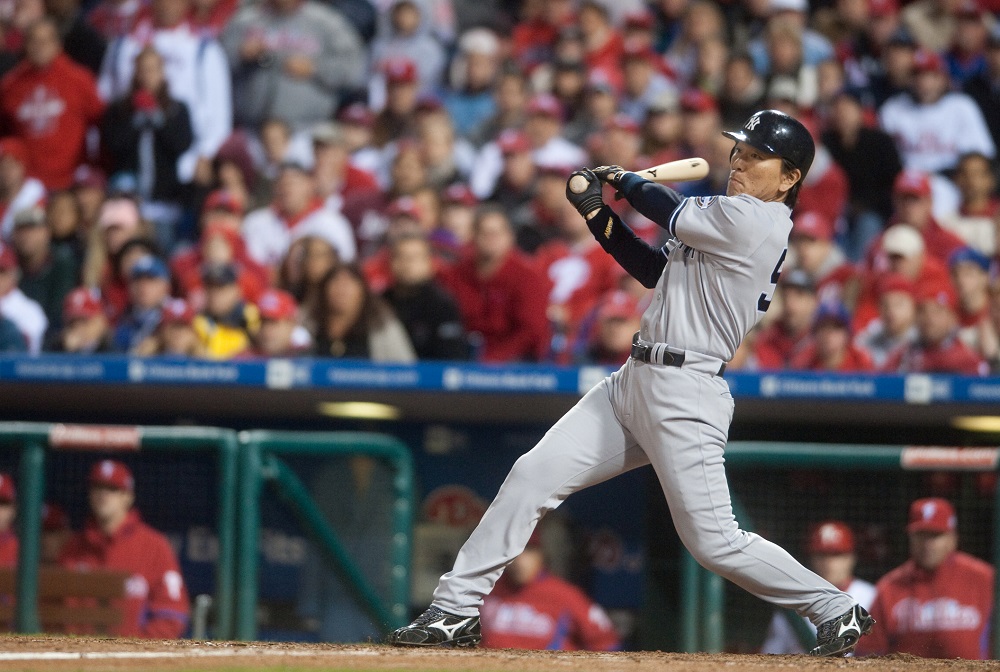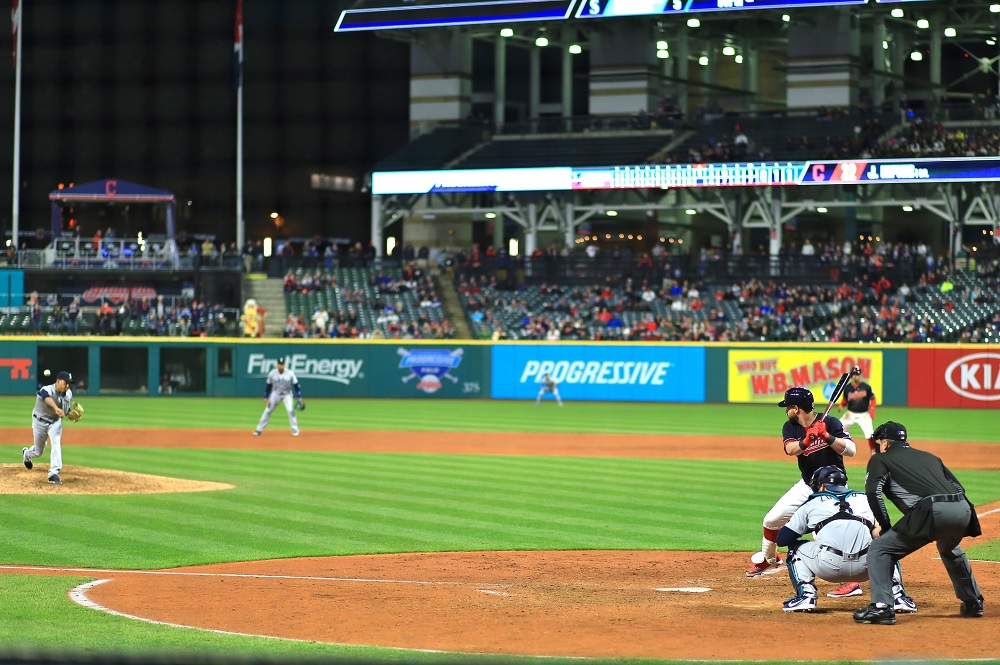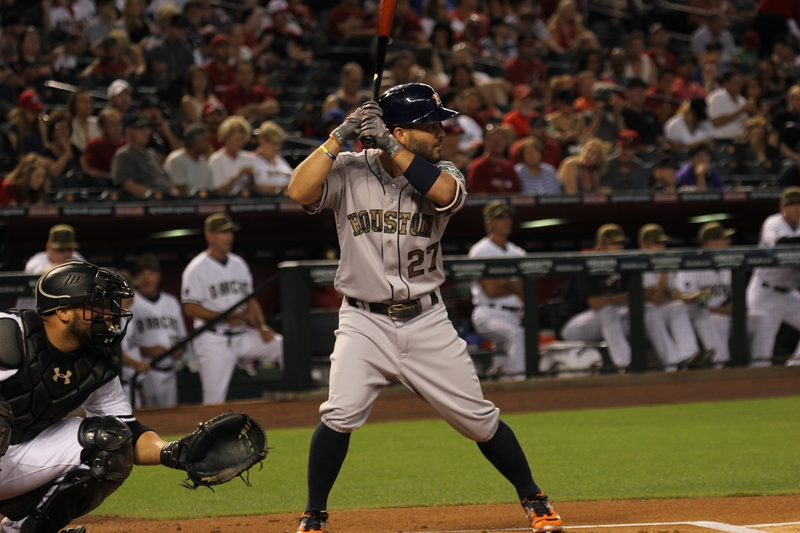Last updated on October 25th, 2023 at 09:19 am
Since the 2022 MLB season, both the American and National League now have a designated hitter spot in their lineup. The DH (designated hitter) is a batter in the lineup that does not play the field. Before the 2022 season, the National League had the pitcher hit in the lineup, while the American League did not.
So, what is the designated hitter rule? Why was the DH spot created in the first place? Who was the first ever player to start in the DH spot in the lineup?
Here is the complete breakdown to the DH rule in baseball.
My Thoughts: Why I Like the DH Rule
I grew up as a Yankees fan, so I always had the DH spot in the lineup for my team. However, when the Yankees before 2022 would play inter league games, I never liked seeing the pitchers hit or run on the basepaths. Chin Ming Wang was a good pitcher for the Yankees, but he got injured while running the basepaths against the Astros when the Astros were a National League team. Back in 2008, home games at a National League ballpark meant the pitcher would hit and run, which is not their natural position. After his injury took place, he was never the same type of player.
Another reason why I like the universal DH spot is that it brings more action to the game. I went to countless Mets game in my life where the pitcher was an automatic out at the plate. That was never fun to watch, and it was boring as a fan to witness an automatic out at the plate.
Now that both leagues have a universal DH spot, I think that is a good thing. To start, it protects pitchers from having to bat and run the basepaths during the game, which reduces injuries. Second, it creates more offense in the lineup, which is a good thing.
Why was the DH Rule Created?
Back in 1906, Philadelphia Athletics manager Connie Mack began championing the idea of the DH. In the 1920s, National League president John Heydler began championing the idea of a designated hitter but again fell flat with other clubs. It was not until the late 1960s for this DH idea to start.
In 1968, starting pitchers owned the baseball diamond with their stats. Pitchers’ at-bats were brutal most of the time, so the game was almost all pitching. Bob Gibson had a 1.12 ERA while Denny McLain won 31 games that season. To make matters even worse for hitters, Carl Yastrzemski led the AL with a .301 average, so something had to change. While the pitching mound went form fifteen feet high to ten, a new emphasis on a designated hitter became more apparent.
In 1973, American League owners led the vote 8-4 to adopt a DH strategy in the game. What began as a trial run for a bit in the International League and some Minor Leagues was ready for the big leagues. 1973 made history with the first official DH to play in a Major League Baseball Game.
Awards + Controversy

The DH role has fans split when it comes to awards. To recognize DH players (like baseball does with pitching and defense), players like Edgar Martinez and David Ortiz win many exclusive DH awards. However, you generally won’t award a DH player the MVP award because they don’t play the field. People argue that the DH can’t be part of the MVP discussion, but Paul Molitor and David Ortiz each won the World Series MVP for their team as a DH. The only player to win a World Series MVP never to play the field was Hideki Matsui.
Do Teams Only Want a Permanent DH?
Most teams use the DH spot as a rotation to give position players rest from the field. Cycling players out of their defensive position gives them rest while keeping their bat in the lineup. A great defensive player can also benefit from being the DH if they are rehabbing from an injury as well.
For example, you may have a player who is recovering from a hamstring injury. By limiting them to only batting, you reduce their chances of injuring themselves from playing the field. The DH role keeps players on teams without putting them on the injury list if they can still bat.
Different Rule Changes to Know
With everything in baseball, you can expect confusion when managers need to replace a DH. Technically speaking, a DH can move into the field during the baseball game. The manager comes over to the umpire to let them know the switch with the new lineup card. When the DH goes into the field, the team forfeits their DH spot and moves the pitcher into the batting order. A
n example is if the DH is the starting catcher, and the catching backup receives an injury during a game. To keep a catcher in the field, you move the DH catcher to the field, forfeit the DH spot. By forfeiting the DH spot, you then then have the pitcher bat in the lineup. When a change like this takes place, you can expect TV commentators or PSA to let fans know what’s happening.
Conclusion
The DH rule was to create more offense in baseball while giving older players more years to play. Players like David Ortiz had the DH role spark new life into their playing career for example. Players could play the game longer and still be impactful for their organizations for many years. If the DH was around when Babe Ruth was playing, you could imagine his stats being even better.
Similar Posts:
What Does ERA Mean in Baseball?
What Does WHIP Mean in Baseball?
What is a Batting Average in Baseball?
What is the Strike Zone in Baseball?
What Does FIP Mean in Baseball?
What Does OPS Mean in Baseball?
What is a Perfect Game in Baseball?
Greg Kristan, owner of The Stadium Reviews, LLC and TM Blast, LLC, brings his extensive experience visiting over half of the MLB ballparks, along with numerous MLS, NHL, NBA, and NFL venues, to provide in-depth coverage on the bag policy, food options, and parking. He has also been interviewed about his experiences on several sports podcasts.




